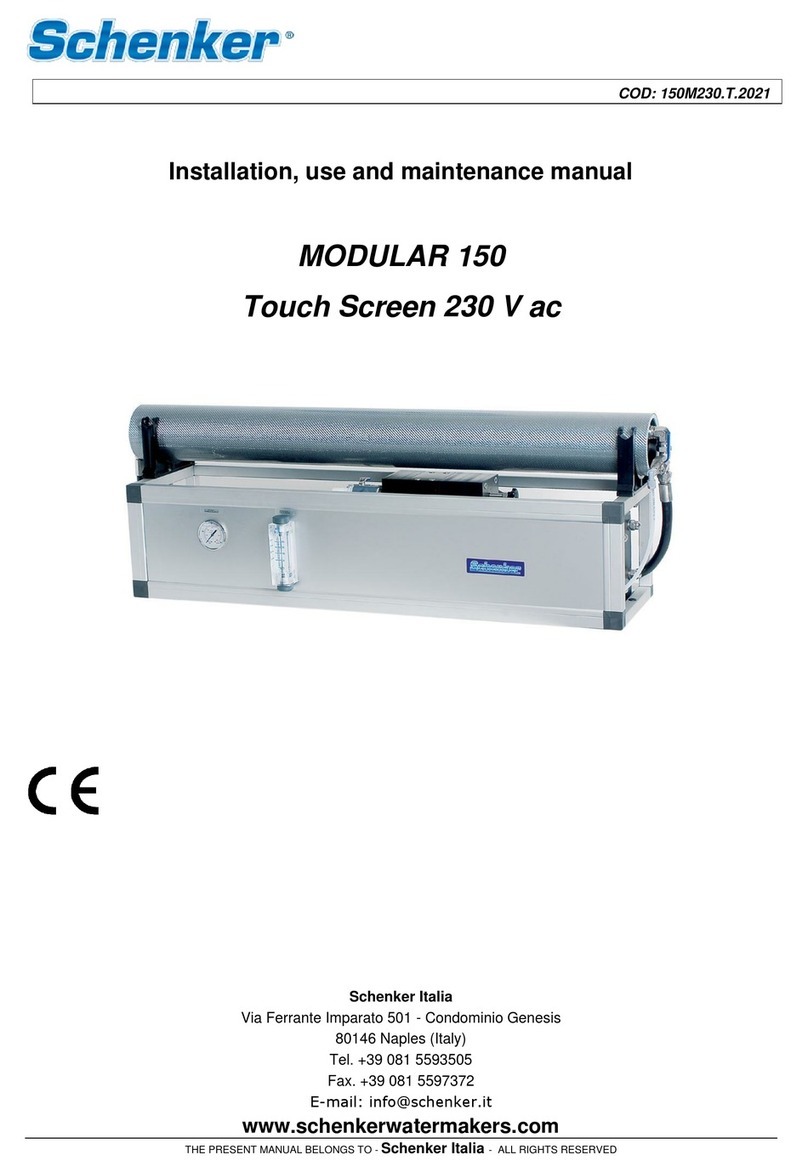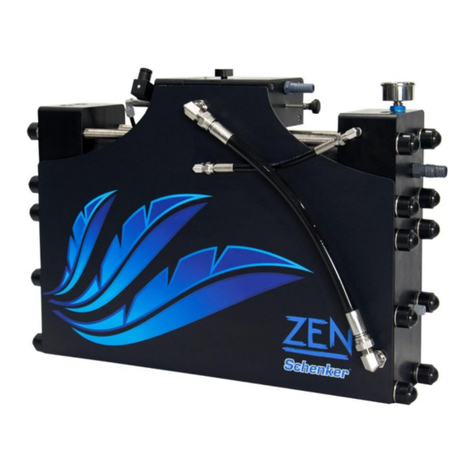THE PRESENT MANUAL BELONGS TO - Schenker Italia -ALL RIGHTS RESERVED
INDEX
1. LAYOUT OF MANUAL........................................................................................................................................4
1.1 STRUCTURE OF THE MANUAL ............................................................................................................................4
1.2 DESCRIPTION OF THE PICTOGRAMS.................................................................................................................4
2. GENERAL WARNINGS AND INFORMATION TO THE RECIPIENT .....................................................5
2.1 IMPORTANT INFORMATION ................................................................................................................................5
2.2 SAFETY WARNINGS ............................................................................................................................................5
2.3WARRANTY..........................................................................................................................................................6
2.4IDENTIFICATION OF THE UNIT ..........................................................................................................................7
2.5LEGISLATIVE REFERENCE ..................................................................................................................................7
2.5.1 DIRECTIVES AND STANDARDS CONCERNING MACHINE SAFETY .................................................................7
2.5.2 RESPECT FOR THE ENVIRONMENT –REQUIREMENTS FOR REMOVAL AND DISPOSAL...............................7
3. PRODUCT PRESENTATION ............................................................................................................................9
3.1 TRANSPORT AND MATERIAL HANDLING ...........................................................................................................9
3.2 STOCK ...............................................................................................................................................................10
3.3 PACKAGING.......................................................................................................................................................10
3.3.1 PACKAGING CONTENTS.................................................................................................................................10
3.4 ATTACHED DOCUMENTS ..................................................................................................................................11
3.5 TECHNICAL DATA .............................................................................................................................................11
3.6 FEATURES OF THE PRODUCT ...........................................................................................................................12
3.7 ADVANTAGES OF THE ENERGY RECOVERY SYSTEM ......................................................................................13
3.8 COMPOSITION OF THE MACHINE ....................................................................................................................14
3.8.1 PUMP GROUP ..................................................................................................................................................14
3.8.2 WATERMAKER GROUP....................................................................................................................................15
3.8.3 ACCESSORIES ................................................................................................................................................17
4. MOUNTING AND INSTALLATION...............................................................................................................18
4.1 GENERAL CRITERIA ..........................................................................................................................................18
4.2 COMPONENTS MOUNTINGS .............................................................................................................................19
4.2.1 PUMP GROUP..................................................................................................................................................19
4.2.2 WATERMAKER GROUP ...................................................................................................................................19
4.2.3 ACCESSORIES................................................................................................................................................19
4.3 INSTALLATION ..................................................................................................................................................19
4.3.1 WATER INTAKES AND DISCHARGES ............................................................................................................19
4.3.2 SEAWATER INTAKE........................................................................................................................................20
4.3.3 FRESH WATER INTAKE FOR WASHING.........................................................................................................21
4.3.4 BRINE DISCHARGE ........................................................................................................................................21
4.4 HYDRAULIC CONNECTIONS .............................................................................................................................22
4.5 ELECTRIC CONNECTIONS.................................................................................................................................25
4.5.1 REMOTE CONTROL PANEL MOUNTING .........................................................................................................25
4.5.2 ELECTRIC CONNECTIONS:WIRES (MODULAR 100 12/24 VDC) .......................................................26
5. FUNCTIONING AND USE..............................................................................................................................28
5.1 COMMAND DESCRIPTION.................................................................................................................................28
5.1.1 ALARMS DESCRIPTION ..................................................................................................................................28
5.2FIRST START-UP PROCEDURE .........................................................................................................................28
5.2.1 PRELIMINARY CHECKS BEFORE PROCEEDING WITH THE START-UP PROCEDURE ....................................29
5.2.2 START-UP .......................................................................................................................................................29
5.3NORMAL OPERATING PROCEDURE ..................................................................................................................30





























